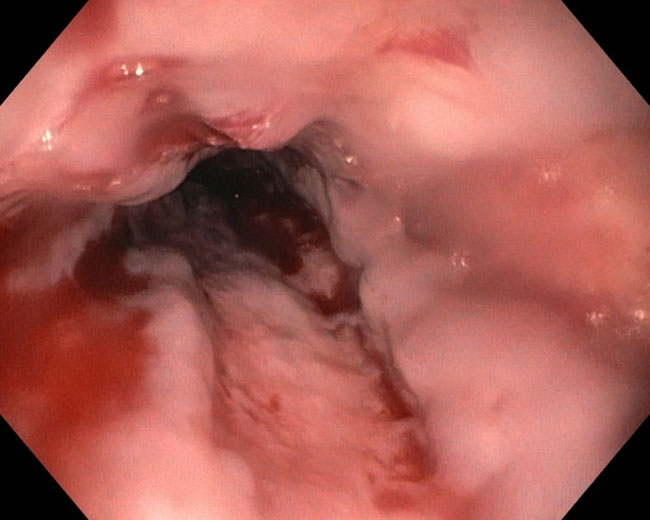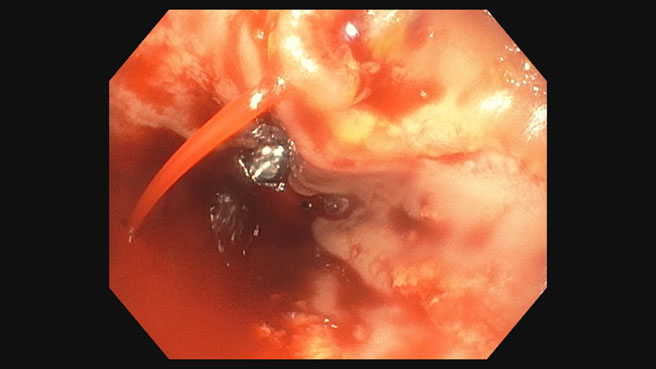A 56-year-old male with a history of alcoholic cirrhosis presents to the ER with new onset bright red bloody emesis. It began two hours ago. He had three episodes of bright red bloody emesis before arriving in the ER. The first episode was the “worst.” He vomited approximately 1 cup of bright red blood. The two subsequent episodes were smaller in volume, approximately one-fourth cup. He denies melena, bloody stools and abdominal pain. Two months ago, he had normal hemoglobin and a platelet count of 96,000. He has no prior history of GI bleeding and has not had a prior upper endoscopy for any indication. He denies alcohol use in the last three years. He does not use ASA or NSAIDs. He takes lisinopril for hypertension. In the ER, his CBC showed an Hgb of 10.2 and a platelet count of 92,000. His blood pressure was 98/64 with a heart rate of 98.
A. Duodenal ulcer
B. Esophageal varices
C. Gastric cancer
D. Gastric ulcer
Image 1
Bleeding Esophageal Varices Images from the personal library of John A. Martin, MD, FASGE
Images from the personal library of John A. Martin, MD, FASGE
Image 2
Bleeding Esophageal Varice Images from the personal library of John A. Martin, MD, FASGE
Images from the personal library of John A. Martin, MD, FASGE